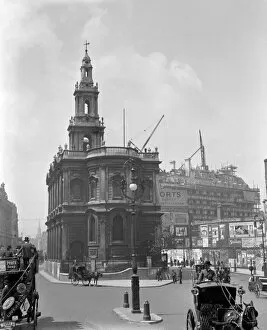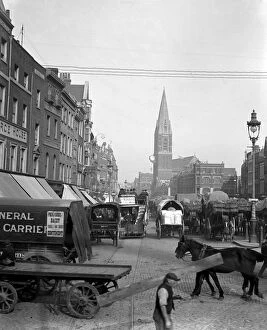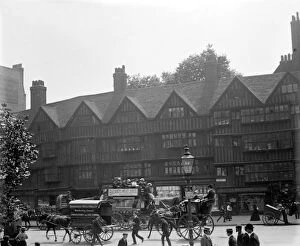Horse Drawn Traffic Collection
"Journeying through Time: Horse-Drawn Traffic in London's Bustling Streets" Step back in time to the early 1900s
All Professionally Made to Order for Quick Shipping
"Journeying through Time: Horse-Drawn Traffic in London's Bustling Streets" Step back in time to the early 1900s, where the streets of London were alive with horse-drawn traffic. Ludgate Hill, a bustling thoroughfare, offers a captivating glimpse into this era. As you look towards St Paul's Cathedral, witness the symphony of hooves and wheels that once filled these historic lanes. Venturing further along Strand, St Mary Le Strand Church stands as an elegant backdrop to another snapshot of horse-drawn commotion. The vibrant scene captures the essence of a bygone era when horses powered transportation and pedestrians navigated their way amidst this lively chaos. Whitechapel High Street reveals yet another facet of London's horse-drawn past. Somewhere between 1900 and 1910, this busy street thrived with activity as horses pulled carriages and wagons through its crowded lanes. Imagine the clatter and clamor echoing off the buildings as people hurried about their daily lives. Regent Street presents a different perspective on this enchanting time period. From here, gazing towards Piccadilly Circus unveils a grand spectacle of horse-drawn vehicles gracefully traversing the roadways. Amidst fashionable shops and bustling crowds, these majestic creatures played an integral role in shaping London's urban landscape. At Queen Victoria Street near St Paul's Cathedral, pedestrians skillfully maneuvered alongside horse-drawn traffic—a delicate dance between man and beast amidst architectural splendor. This intersection served as both conduit for commerce and testament to human ingenuity coexisting harmoniously with nature’s strength. Staple Inn at Old Holborn takes us deeper into history—an ancient Inn steeped in tradition—where horses once clip-clopped along its cobblestones during 1900s' dawn. Here lies evidence of how equine power shaped not only transportation but also social gatherings within these hallowed walls.












